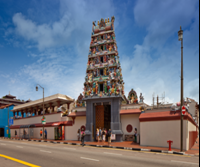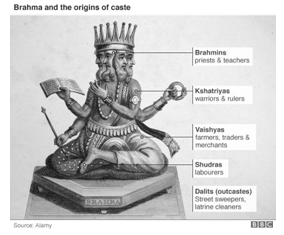

Context
People from the Dalit community entered the local Mariamman temple at Chellankuppam village in Tamil Nadu’s Tiruvannamalai district for the first time in more than half a century.
Background
- Dalits have historically been denied entry into temples as they are considered "impure" by many conservative Hindus. Even today, most temples in India do not allow Dalits to enter.
- Dalits are among India's most downtrodden citizens because of an unforgiving Hindu caste hierarchy that condemns them to the bottom of the heap.
- Despite laws to protect them, discrimination remains a daily reality for the country's roughly 200 million Dalits.
About
The case of Tamil Nadu
- In the case of Tamil Nadu, most of the major temples became accessible to Scheduled Castes around Independence, the struggle for entry into several smaller temples in the State continues to date.
- The Tamil Nadu Temple Entry Authorisation Act of 1947 allows all Hindu castes and classes to enter Hindu temples and worship.
- In a similar case, dalits of Eduthavainatham village in Kallakurichi district also entered the Sri VaradarajaPerumal Temple for the first time in this year.
|
About the Marimman Temple:
|
Caste system in India:
- The Caste system which divides Hindus into rigid hierarchical groups based on their karma (work) and dharma (the Hindi word for religion, but here it means duty) is generally accepted to be more than 3,000 years old.
- It divides Hindus into four main categories - Brahmins, Kshatriyas, Vaishyas and the Shudras. Many believe that the groups originated from Brahma, the Hindu God of creation.
Roots of Caste system in Tamil Nadu:
|
Caste population constitution in Tamil Nadu: Vanniyars (22%), Dalit/SC/ST (21%), Mukkulathor (20%), non-Tamils (10%), Nadars (8.5%), VellalaGounders (7%), Christians (7%), Muslims (6%), Mudaliars (5%), Muthurayars (3%), Chettiars (2%) and Brahmins (2%). |
- From 200 to 100 BC, social stratifications were evident in the Tolkappiyam, a treatise on Tamil grammar and classical poetry, with the following groups: Anthanars or Parpanars (priests or Brahmins), Arasars (kings or Kshatriyan), Vanikars (merchants or Vaishyas) and Vellalars (agriculturists).
- Although these groups have parallels to the previously described four-tier varna system, the two cannot be superimposed.
- In the Tolkappiyam, these groups are associated with profession as opposed to birth.
- As the complexity of TN social fabric diversified, Portuguese and British colonizers arrived; solidifying caste in administrative language as better jobs opportunities were afforded to upper castes or Christians.
|
The word caste itself is derived from casta (Portuguese) after Jesuit missionary Henriques used the term in his observations of society in the 1500s. |
Struggle against caste based discrimination in Temples:
- The struggle for castes considered “avarnas” (SHUDRAS) by the Hindu orthodoxy to enter temples, especially the ones maintained under Agama traditions, can be traced even back to the 7th-8th centuryAD with the tribulations faced by Nandanar, a Dalit, in entering Chidambaram Natarajar Temple, as documented in the Bhakti literature.
- In modern history, one of the earliest documented temple entry struggles in present day Tamil Nadu were the attempts made by the Nadar community in the second half of 19th century in multiple places, especially in the southern region, where they faced severe discrimination despite making economic progress.
The Vaikom Satyagraha: (The Temple Entry Movement)
- The Vaikom Satyagraha in 1924-25 marked a significant milestone in the history of India’s struggle against caste discrimination.
- The movement, led by TK Madhavan, EVR Periyar, MK Gandhi, and Narayana Guru, was launched to protest against the ban on the entry of Scheduled Castes and backward castes to the public roads surrounding the Vaikom Shiva Temple in Kottayam.
- The movement continued for almost two years, and ultimately, it led to the temple entry proclamation in Travancore in 1936, allowing all Hindus to enter temples irrespective of their caste.
Where the actual work needs to be done?
- Education: One area where the lowered castes are underrepresented is education. Although the Indian constitution guarantees equal opportunities to all, the lowered castes have not been able to avail these opportunities.
- Representation Question:
- Higher education institutions: The underrepresentation of SC/ST/OBC communities in faculty positions in central universities, IITs, IIMs, and other higher education institutions is a long-standing issue in India.
- Media: The lowered castes are grossly underrepresented in the media industry.
- Judiciary: The lowered castes are also underrepresented in the higher judiciary.
- Corporate sector: They are underrepresented in the corporate sector.




